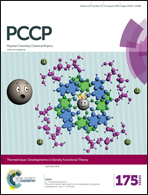Oxygen-driven transition from two-dimensional to three-dimensional transport behaviour in β-Li3PS4 electrolyte
Abstract
Solid state electrolytes with high Li ion conduction are vital to the development of all-solid-state lithium batteries. Lithium thiophosphate Li3PS4 is the parent material of a series of Li superionic conductors Li10MX2S12 (M = Ge, Sn,…; X = P, Si,…), and β-Li3PS4 shows relatively high ionic conductivity itself, though it is not room-temperature stable. The positive effects of introducing O dopants into β-Li3PS4 to stabilize the crystal phase and improve the ionic conducting behaviour are revealed in this study. With the aid of first-principles density functional theory (DFT) computations and quasi-empirical bond-valence calculations, the effects of O doping at different concentrations on the properties of β-Li3PS4 is thoroughly investigated from the aspects of lattice structures, electronic structures, ionic transport properties, the interface stability against Li and the thermodynamic stability. An oxygen-driven transition from two-dimensional to three-dimensional transport behaviour is found and the oxygen dopants play the role as a connector of 2D paths. Based on all these simulation results, hopefully our research can provide a new strategy for the modification of lithium thiophosphate solid electrolytes.


 Please wait while we load your content...
Please wait while we load your content...